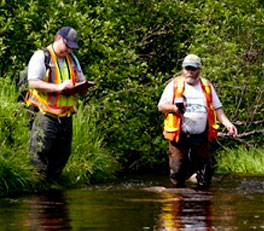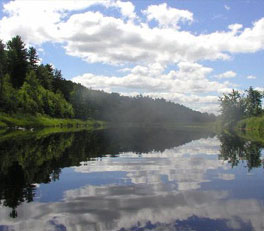

The Sisson Project EIA Report submitted to the provincial government on July 31, 2013 can be viewed at Sisson Environmental Impact Assessment Report.
Information on the New Brunswick Environmental Impact Assessment process for the Sisson Project can be found on the Government of New Brunswick website.
Information on the Federal Environmental Assessment process for the Sisson Project can be found on the Canadian Environmental Assessment Agency website.
The Sisson Mine environmental assessment included the construction of a Tailings Storage Facility (TSF) for the safe management and disposal of tailings (mine waste). The construction of the proposed TSF will result in the loss of a natural water body frequented by fish and, therefore, requires a regulatory amendment to list the water body on Schedule 2 of the Metal and Diamond Mining Effluent Regulation (MDMER) and an Authorization under the Fisheries Act.
Documentation:
Q & A -- MMER process and Fish Habitat Compensation Plan
Alternative Assessment Fact Sheet
Assessment of Tailings Management Alternatives Report
Application for Fisheries Authorization and Fish Habitat Compensation Plan
In July 2019 the Department of Fisheries and Oceans Department of Environment and Climate Change Canada advised that the Metals and Diamond Mining Effluent Regulations Schedule 2 Amendment ("MDMER") authorisation process had been successfully completed. Through this project, project designs regarding the placement of the tailings facility, the tailings technology to be used and the fish habitat compensation plan for the Sisson Project were thoroughly reviewed and the result has been published in the Canada Gazette, Part II: Metal and Diamond Mining Effluent Regulations --- Regulations Amending Fisheries Act SOR/2019-245 25/06/19.
The Sisson Mine environmental assessment included the construction of a Tailings Storage Facility (TSF) for the safe management and disposal of tailings (mine waste). The construction of the proposed TSF will result in the loss of a natural water body frequented by fish and, therefore, requires a regulatory amendment to list the water body on Schedule 2 of the Metal and Diamond Mining Effluent Regulation (MDMER) and an Authorization under the Fisheries Act.
Documentation:
Q & A -- MMER process and Fish Habitat Compensation PlanIn October 2020, the review of Sisson Fisheries Act Authorization application and Off-setting/Fish Habitat Compensation Plan was completed and approved. Pursuant to paragraph 35(2)(b) of the Fisheries Act the Minister of Fisheries and Oceans Canada issued a HADD Authorization to the Sisson Project.